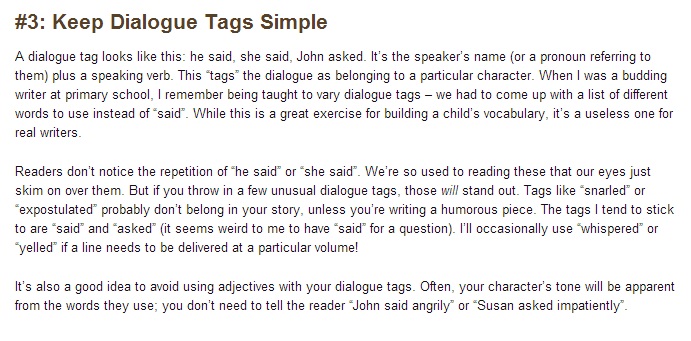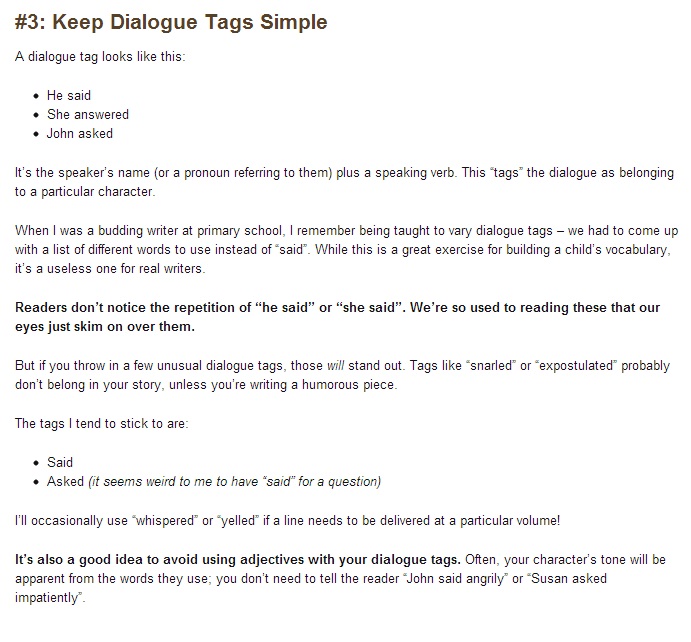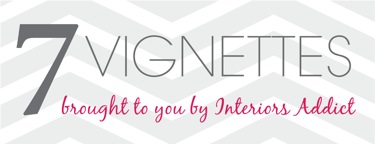This is a guest contribution from Ali Luke.
Does your blog lack something?
Maybe you post regularly, but your posts aren't getting many comments or shares. It feels like no-one's reading.
What you need is pillar content. (Also known as "cornerstone content" and "evergreen content".) These posts get links, shares, and comments. They're posts that you're proud to have written; ones that readers can return to again and again.
They'll often be longer than your usual posts.
They may well be more carefully structured, and more carefully edited.
And you might well be thinking…
Where Do I Find the Time?!

Image copyright Renee Jansoa – Fotolia.com
There's a very, very simple way to make enough time to create really good posts:
Cut down on the number of posts you currently write.
You don't have to publish every day. In fact, you probably shouldn't.
(And just in case you're not convinced … Michael Hyatt agrees, and even Daily Blog Tips no longer publishes content daily.)
Think about it. Have you ever unsubscribed from a blog that provided amazingly valuable content … just because they didn't post every day?
I haven't. But I have unsubscribed from blogs that kept putting out content day after day after day – even if it was good stuff. I just couldn't keep up.
(If you're writing in a fast-moving newsy niche, it might be harder to cut back. You could narrow your focus a little, or you could pick a particular day of the week to focus on longer-lasting content.)
Your Objectives and Your Post Ideas
Before you write any pillar post, think hard about what you want to accomplish with it. Don't just write a post for the sake of it.
Depending on your broader blogging objective, the aim of your post could be one or more of these:
- Create a portfolio piece that you can use to impress potential clients / employers.
- Impress first-time readers to your blog and encourage them to subscribe.
- Prompt readers to buy one of your products.
- Get lots of shares on social media.
- Receive more enquires from prospective clients.
By having a clear aim in mind before you start writing, you can tailor your post toward it.
For instance, let's say you blog about parenting, and your goal is to encourage readers to buy your ebook Help Your Teen Pass Any Exam.
You could simply tack on a paragraph about your ebook at the end of a post on any topic – but ideally, you want the post to get the reader into the right frame of mind to buy it.
In this case, posts like these will probably work well for you:
- Why Our Schools Are Failing Students
- Ten Tips for Parenting Teens
- How to Help Your Teen Study for an Exam
Posts on other aspects of parenting won't bring in the right readers, or get readers thinking about the right things. You might want to rethink topics like:
- Five Tips for Getting Your Baby to Sleep
- How to Prepare Your Pre-Schooler for Starting School
- Ten Moms Confess Their Guilty Parenting Secrets
Those might well be great, valuable posts – but they're not ones that will help you sell your ebook.
It's often useful to come up with a whole bunch of ideas at once. If you can, set aside at least 20 minutes to brainstorm – often, once you get past the first 10 or so ideas, you get into some really interesting and valuable ones.
Keep your ideas somewhere safe, and turn to your list whenever you start a new post. Think about what goal you'd like to meet – and choose a topic that fits well with that.
Crafting Your Title
Although many bloggers write their title after writing their post, it's a good idea to come up with a "nearly-there" title before starting on your post. If you just have a topic in mind, it can be tough to figure out how best to structure your post, or what to include it in.
Your title should:
- Be clear. Get keywords in there – don't try to be too clever. Both readers and search engines need to know what your post is actually about.
- Be specific. "Five tips" is better than "tips", because readers get a better sense of what your post involves. (Copywriter Steven Slaunwhite has a great, short video on this technique here.)
- Create interest. Adjectives are great for this – "five powerful tips" or "five simple tips" rather than just "five tips". You can also try words like "secrets" or "little-known".
- Avoid excessive hype. If your post title is "Ten Insider Secrets the Experts Don't Want You to Know" then you'd better have something impressive to share! A hyped up title might get clicks, but readers won't stick around long (and you'll lose their trust).
For more tips – including advice on personalising titles, using keywords, using power words, and much more – see How to Craft Post Titles that Draw Readers Into Your Blog.

Jon Morrow's Headline Hacks is a great resource, if you want some ready-made ones for inspiration. You could also look at any popular blog or magazine and borrow from them – take a title you like and switch around a few words so that it works for your blog.
Structuring the Main Body of Your Post
One key aspect of writing that many bloggers struggle with (or don't understand the importance of) is structure.
If your posts are poorly structured, they'll not only be hard to write, they'll be hard to read. You'll spend too much time staring at the screen, wondering what to write next … and your readers will often click away after a few paragraphs because they're struggling to find the value in your post.
One basic structure that you're almost certainly familiar with is the list post. Even if you think these are overdone, get to grips with this structure, because it can be used as a basis for many others.
Here's how a basic list post might look:
Introduction
#1: Subheading
Paragraph
#2: Subheading
Paragraph.
… and so on until …
Conclusion / call to action
A how-to post looks almost identical in structure. In fact, the only real difference between list posts and how-to posts is this:
- Readers can use one or several of the points in a list post and still get something valuable.
- Readers need to follow the points in a how-to post step-by-step.
It's a really good idea to number your points, because it helps readers orientate themselves – they know how far they've got through the post and how far they still have to go.
Using Subheadings
One of the best ways to structure your post, whether or not it's a list, is to use subheadings. This is especially crucial in longer posts, where readers might be dipping in and out, or skimming for information. (You can see plenty of them at work in this post!)
Some bloggers simply use bold text for their subheadings, but it's better to use the Heading formats built into your blogging software. This makes the text larger so it stands out more – and you can also use different levels of subheading to split long sections into several parts.
If you want to try something a little different from a standard list post or how-to post, use one of the fool-proof forumlas below.
Three Fool-Proof Post Formulas (Plus Examples)

Start with one of these formats, and you'll find it easy to come up with a great post. These ideas will all produce a post that's great for linking to in your guest post bios, highlighting on your About page, including in your sidebar, and sharing on your social media accounts.
Idea #1: An A-Z Guide
Example: 26 Essentials for Blogging Success: What You Need to Know, Social Media Examiner
These types of post are fun to write, they suit almost any topic, and they have a ready-made structure. They're also a really good way to tackle a big topic that might normally be too much for a single blog post.
Creating an A-Z post is simple. Just come up with a topic (like "the A-Z of vegan cooking" or "the A-Z of board games). List the letters A to Z on a sheet of paper, and think of a word or phrase that goes with each. Then all you need to do is write a sentence or paragraph for each item.
Idea #2: A "Why and How" Post
Example: Why You Need to Create and Sell A Product Now (And How To Do It)
Going beyond a simple "how to", these posts work brilliantly because they help readers understand why something is important. It won't necessarily be obvious to readers why they'd want to do something unless you spell this out.
You'll structure your post like this – make the subheadings specific to your topic:
- Introduction
- Why This Matters
- How to Do It (with numbered steps)
Idea #3: Top Experts Answer…
Example: The Experts' Views on Content Marketing
Even if you don't have a lot of experience in your topic area, you can produce a great, in-depth post that readers will want to share and link to … by using experts in your niche.
The key to doing this is to choose one question that you want lots of people to answer. Most experts are really busy, and they're much more likely to get back to you if you ask one question instead of ten. (This is sometimes called a "one-question interview".)
You don't even have to approach experts directly. Instead, you could write a post that collates lots of ideas on a particular topic, quoting from and linking to posts that these experts have published.
These three ideas aren't the only possibilities, of course: there are dozens of other post formulas that you can use too. (Whenever you come across a great post, see if you can break it down and figure out how it's structured.)
How Long Should Your Post Be?
Some bloggers will say "how long is a piece of string?" – but I'll give you a proper answer.
Aim to make your posts between 600 and 1,500 words.
If they're under 600 words, it'll be tough for you to deliver something really valuable.
If they're over 1,500 words, you'll struggle to keep the post structured and coherent.
Of course you can write shorter posts and longer ones – but stick to a standard post length until you're comfortable there.
Writing Your First Draft
Some bloggers love coming up with ideas and planning posts – but they struggle when it comes to getting words onto the page.
Here's how to get your first draft written:
- Plan first. Make sure you have a clear structure in place. That could mean getting all your list points written down, or using one of the ready-made ideas below.
- Avoid distractions. Yes, you've heard this one before – but are you doing it? Writing takes a lot of focus and energy, so try using the Pomodoro technique or similar to write in short bursts … and don't check Twitter / Facebook / your email until the time is up.
- Don't try to make it perfect. You'll have as much time as you need to edit, so don't worry if a sentence has come out a little weird, or you're missing a piece of crucial information. Keep moving forward in your post.
- Jump straight in with your first major point or section, rather than starting at the introduction. Once you've written the post, it'll be easier to create an introduction that fits.
- Imagine you're writing an email to a friend. What advice would you give? How would you write it? Use this as the basis of your blog post. (A great way to go further with this is to do a "Q&A" post where you answer questions from your readers – you may well find your writing flows more smoothly than ever.)
Great Beginnings…
Your introduction has to do a lot of work – almost as much as the title. It needs to hook the reader, making them want to read on. It also needs to pave the way for what's to come – you could write an amazing, attention-grabbing introduction that falls flat if it doesn't really have anything to do with the rest of your post.
Some easy but powerful ways to begin your post are:
- With a question. These help the reader to engage by getting them thinking (or at least agreeing!) For instance, "How do you keep yourself fresh, inspired and creative as a blogger?"
- With a quotation. This can be a great way to begin if your post is building on something that another blogger's written. Some bloggers use motivational or inspirational quotations at the start of all their posts – Alex Blackwell from The Bridgemaker is a good example.
- With an anecdote – a mini story from your life. If this is relevant to your post, and if you keep it fairly short, it can help your readers feel connected to you.
For lots more ideas for your post introduction, check out Darren's in-depth post 11 Ways to Open a Post and Get Reader Engagement.
…And Great Endings
Although it's clear that introductions are important, endings might seem less so. However, they have a crucial role to play. In fact, if you end too abruptly, you're missing out on a great opportunity.
As Darren writes in Calls to Action – 12 Tips To SNAP Readers Out of Passivity:
The vast majority of visitors to your blog are paralyzed by passivity. They never comment, they don't vote in polls, they won't subscribe to your feed or newsletters, they won't buy the affiliate products that you recommend, they won't email a friend about your blog, they won't vote for you in social bookmarking sites and most of them will never come back.
Let's say you've written a ten-point list post. Don't just stop at the end of item ten – add a couple of sentences beneath the list to round off the post. A list post is a great one to use to get comments, because you can ask something like:
Do you have a tip to add to this list? Share it in the comments below (or let us know which of the existing tips you liked best).
A "call to action" simply means asking (or telling) the reader to do something. It might look like one of these:
- What do you think? Leave a comment below.
- If you enjoyed this post, please hit the "Tweet" button to share it with others.
- Want to know more about [topic]? Click here to read my post [title].
- To learn more, check out my ebook [Title and link].
Some bloggers worry that calls to action sound pushy or even desperate. The truth is, readers are used to them – and will often welcome them. After all, if you visited a new blog for the first time and read a great post, wouldn't you appreciate a link to another relevant post?
It might seem a little silly to ask directly for comments – surely readers know the comment box is there! – but some readers, especially shyer ones, will be much more likely to comment if you specifically invite them to do so.
Editing Your Post
It's often a relief to get to the end of your post … but don't hit publish just yet.
Your first draft probably needs a bit of tidying up before it's ready for the world. In fact, you'll probably want to run through two separate edits – a "big picture" overview and a "zoomed in" look at the details.
Editing the Big Picture
Before you get too caught up in changing words or checking your use of commas, focus on the bigger picture. Read through your post and look for:
- Anything superfluous that you can cut. Save what you remove, in case it can be used in a future post.
- Anything missing that you need to add in. You might need a better transition between your introduction and first section, for instance.
- Anything that's not in the right order. Perhaps it would make better sense to start your list with the current item five, for instance.
You might also want to show your draft post to a friend or trusted reader – ask them if there are any major changes they think you should make.
Editing the Details
Once you're happy that your post contains the right information in the right order, it's time to make every sentence pull its weight.
At this level of editing, you're looking out for:
- Words or phrases that you've overused. If you use the phrase "content marketing" five times in a paragraph, it's going to look like you're blindly following some outdated SEO keyword-stuffing practice (even if you didn't mean to and just ended up writing it that way).
- Sentences that read oddly. Perhaps it sounded right in your head, but looks a bit weird on the page. It's a great idea to read your post out loud – this will really help you spot any awkward bits.
- Spelling mistakes and typos. Double-check anything your spell-checker flags up (you do run your posts through a spell-checker, right?) but also look out for common spelling mistakes.
Most writers find it really hard to edit their own work – so even if other people's typos jump right out at you, go slowly and carefully when editing your own work, or ask a friend to help you.
Don't get too anxious or caught-up here, though. Yes, spelling and grammar matter – but readers will forgive the occasional slip. If you do spot an error after hitting publish (or if a reader points one out to you), it's easy to update your post.
Formatting Your Post
Looks are important. You could write a brilliant, useful, entertaining post that doesn't get readers simply because it looks hard to read.
If you have long paragraphs in a small font, readers may well not bother making the effort to read your post at all. In case you're not convinced, take a look at these screenshots. They show an identical post, formatted in two different ways:

Post formatting example 1

The second version instantly looks more interesting and attractive.
It's easy and straightforward to add formatting in your blog editor. Some great ones to use are:
- Subheadings. These split your post into easy-to-read chunks, and help readers find information that they're skimming for.
- Bold text. This is a great way to highlight key points. Don't overdo it, or it can start to look choppy and distracting. Aim to put whole sentences (or at least long phrases) in bold, rather than individual words.
- Italics. These are useful for foreign words, individual words you want to emphasise, or "asides" that you want in a different font. (For instance, I use italics at the start of guest posts, where I'm introducing the guest blogger to my readers.)
- Bullet points. Lists are easy to take in, and they also have extra white space around them – making for easy readability. You can use either unnumbered (usually round, black) bullet points or numbered ones.
- Short paragraphs. One of the simplest ways to make your posts more readable is to split up any long paragraphs. If you've gone over four lines, then think about splitting part-way.
Some bloggers add formatting as they're writing, others add it at the end. Whichever you choose to do, always have a quick look at your post in "preview" mode and check that everything looks OK. (For instance, make sure all your subheadings are the right size – it's easy to muddle up H2s and H3s.)
Adding Images
Although it's not a hard-and-fast rule, you'll find that most major blogs include a large image at the top of their posts … and there's a good reason why.
Images grab our attention. They draw our eyes, and ease us into the post. Usually, they help create a professional, polished feel on your blog. In some blog themes, they also get picked up as thumbnails on the front page, alongside the excerpt – and they appear on Facebook if you link to your blog post.
There's really no reason not to enhance your post with an image. You have plenty of sources, like:
- Your own photography. This works really well for bloggers like Benny Lewis (who uses photos of himself) and Farnoosh Brock (who uses photos she's taken, sometimes overlaid with text). If you have a strong blogging voice or if you want to build a deeper connection with readers, try this out.
- Stock images that you've bought. There are plenty of sites like iStockPhoto which will sell you images you can use on your blog. This isn't a cheap option, but if you're writing a post that needs to look great, it could be worth doing.
- Free images from Flickr. Lots of kind artists put their creations (photos, illustrations, etc) onto Flickr, where you can browse for images licensed under "Creative Commons." Make sure you find images that are marked for "commercial use" if your blog makes any money or might do so in the future – e.g. you're running ads.
Even if you use other people's images rather than your own, you might want to come up with some simple guidelines for choosing them perhaps you always use black and white shots, or always use colourful, fairly abstract ones, or use illustrations rather than photos.
An important "don't": it's not OK to use images that you've found from a simple Google search. Unless they're licensed under Creative Commons, you need to get permission from their creator.
Getting and Using Feedback
You can easily strengthen your blog posts if you get feedback and use it. A good way to do this is to ask someone to read your draft post, and get them to tell you how they think you could improve it. You might not be able to do this for every single post – but doing it even occasionally can help give you a new perspective on your blogging.
The best people to ask are:
- Fellow bloggers who understand the medium. Sure, your old high school buddy might have been brilliant at turning out A grade essays – but he may not have a clue about what works in the blogging world.
- Thoughtful readers who've been following your blog for some time. Maybe you've exchanged comments or emails with a reader and built up a great rapport: they might be delighted to have the opportunity to review one of your draft posts.
Don't approach top bloggers in your niche and ask for feedback on your draft posts. Yes, they might well have great advice to share – but they're unlikely to have the time to do so, and attempting to begin a relationship by asking for a favour isn't a great idea.
You don't have to use all the suggestions you get, but pay particular attention to anything that didn't come across clearly, or that your reader misunderstood. Even if it seems obvious to you, rewrite it.
If you're not sure about a particular suggestion, get a second opinion. It's also a good idea to wait overnight before implementing (or rejecting) feedback – you may find that a break from your post helps you see it in a more objective light.
After You Hit Publish…

Your post is out there for the world – but your job isn't done.
Unless you have a huge audience, hitting "publish" almost certainly isn't enough to draw lots of readers to your post. Although some bloggers like to believe that truly great content will be found and shared, the truth is that you'll almost certainly need to give it a helping hand.
(Of course, it's crucial to write great content in the first place: aim to find a balance between creating content and promoting it.)
Promoting Your Pillar Post
There are plenty of ways to promote your post. These are some basics that you can do for every post:
- Link to your post on Twitter. Although there are plugins that auto-tweet your posts, I prefer to craft an individual, custom tweet each time.
- Link to your post on Facebook. You may want to add a brief blurb about the post, or ask a question to encourage comments on your Facebook page.
- Include your post in your newsletter. Not all of my newsletter readers subscribe to my blog, so I put links to my posts in monthly roundups.
For really good pillar posts, you might go further, and:
- Email a blogging buddy and ask them to consider linking to your post. Don't email the top five bloggers in your niche for this – choose people who you already have a relationship with (perhaps through Twitter or commenting on one another's blogs).
- Link to your post from your sidebar. Many bloggers have a widget of "Recommended Posts" or "Popular Posts" to highlight their best content. Some even create eye-catching image banners to link to their best posts.
- Go back to old posts and link to the new one. If you have an older post on a similar topic, why not link forward? Check in Google Analytics to see which of your older pieces are getting the most search engine traffic.
- Link to your post from a guest piece on another blog. Be cautious with this, as if you write a guest post just for the sake of links, it may well not be accepted. Only put a link in the body of your post if it's truly relevant – otherwise, use your bio. Joseph has some good tips on guest posting for backlinks here.
Answering Comments
Once your post is live, set aside time to answer comments. Lots of readers who don't leave a comment will still scroll down and take a look at the comments section, so this counts as an important part of your post.
You'll ideally want to:
- Respond to all your comments (unless they're very short ones like "Thanks, great post!") You don't have to reply to every single comment instantly, but if you let comments remain unanswered for days, it doesn't create a great impression for new readers.
- Remove any spam comments. Plugins like Akismet do much of the hard work for you, but it's still a good idea to act promptly in removing any spam that does get through. You may also want to remove any offensive comments (e.g. ones including racist or sexist language).
If you're struggling to get comments, you might email a blogger friend (or a loyal reader) and ask them to start the ball rolling. There are plenty of other great tips on getting more comments in Want More Comments? Let ProBlogger Help!
Your Action Plan
I'm aware there's a fair bit of reading here!
What matters is that you have a go at creating pillar content for your blog – and here's a simple action plan to help you do that this week, in just 30 minutes per day.
During those 30 minutes, turn off distractions and set a timer. Tell yourself you'll concentrate until the time is up – so if you get the sudden urge to check Facebook, ignore it!
Day 1: Come up with several ideas and choose the strongest one. Plan out your post (you might want to scroll up a bit and check the advice on structuring).
Days 2, 3 and 4: Write your post. Get as far as you can in 30 minutes each day. If you get stuck at any point, imagine you're replying to a comment or sending an email to one of your readers – write as though you're talking directly to them.
Day 5: Edit your post, focusing on the big picture. Cut any tangents, rearrange paragraphs and add in new sections if necessary.
Day 6: Edit your post again, this time focusing on the details. Watch out for typos, grammatical mistakes, and other slips.
Day 7: Add formatting, including an image, check your post in preview mode, and hit publish.
Of course, some pillar posts will need a bit more time for some of these stages. An A-Z post, for instance, might well take an hour or two to plan, and a post that rounds up lots of expert views could involve a lot of emailing and waiting for responses. But this plan should get you up and running with a great post quickly – and hopefully you'll find the results well worth the time you spent.
I'd love to hear how you get on with writing pillar posts: share your experiences and tips in the comments below. If you have any questions, I'll be glad to answer them too.
Ali Luke runs Writers' Huddle, a community / teaching site for writers and bloggers who want to take their craft further. Along with lots of seminars and other resources, Writers' Huddle includes her Blog On e-course, which takes you step-by-step through the process of creating great posts and pages for your blog. Find out all about Writers' Huddle, and read what members say about it, here.
Originally at: Blog Tips at ProBlogger
![Build a Better Blog in 31 Days]()
Your Ultimate Guide to Creating Amazing Content that Draws Readers Into Your Blog


















.jpg)